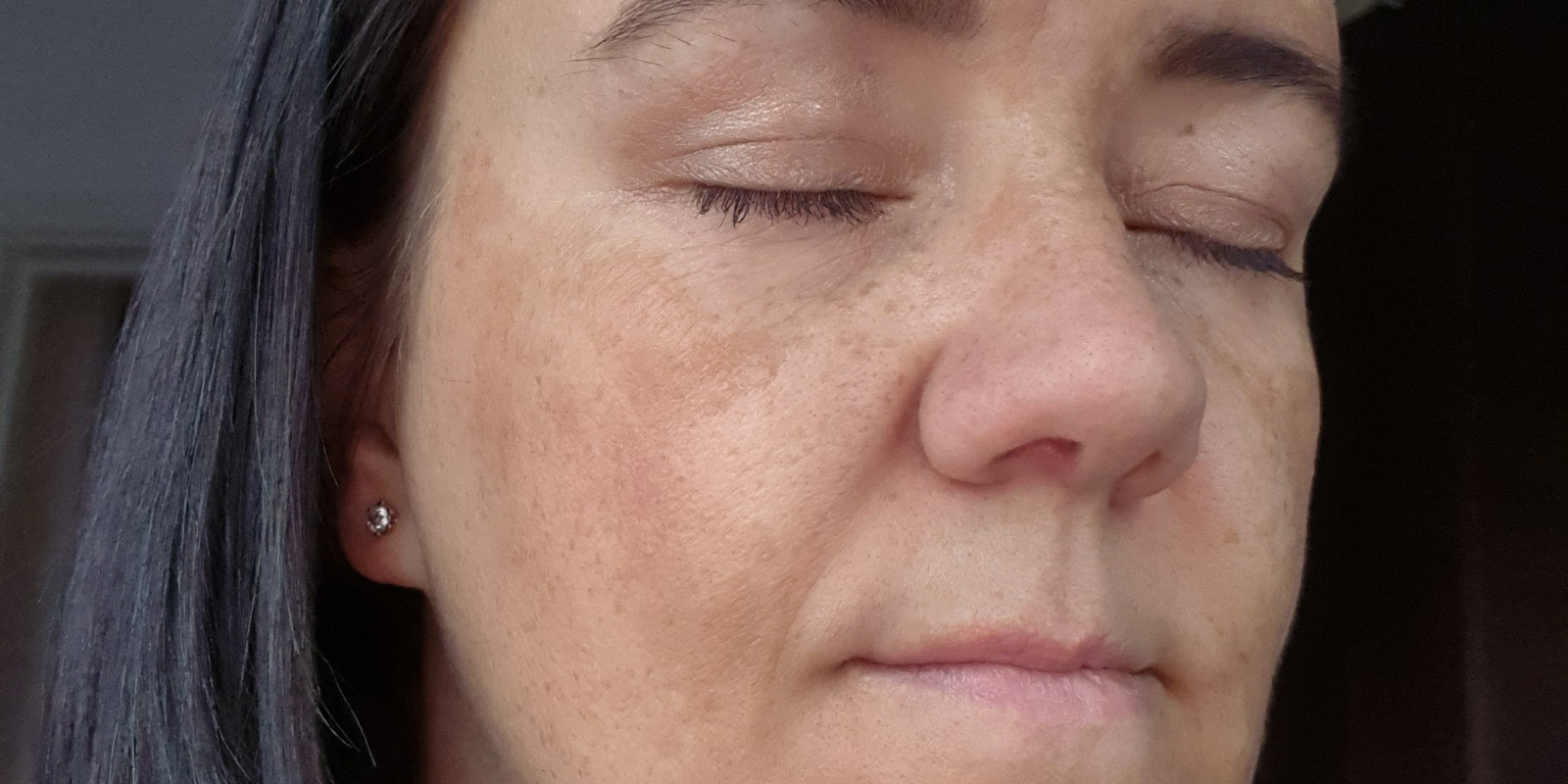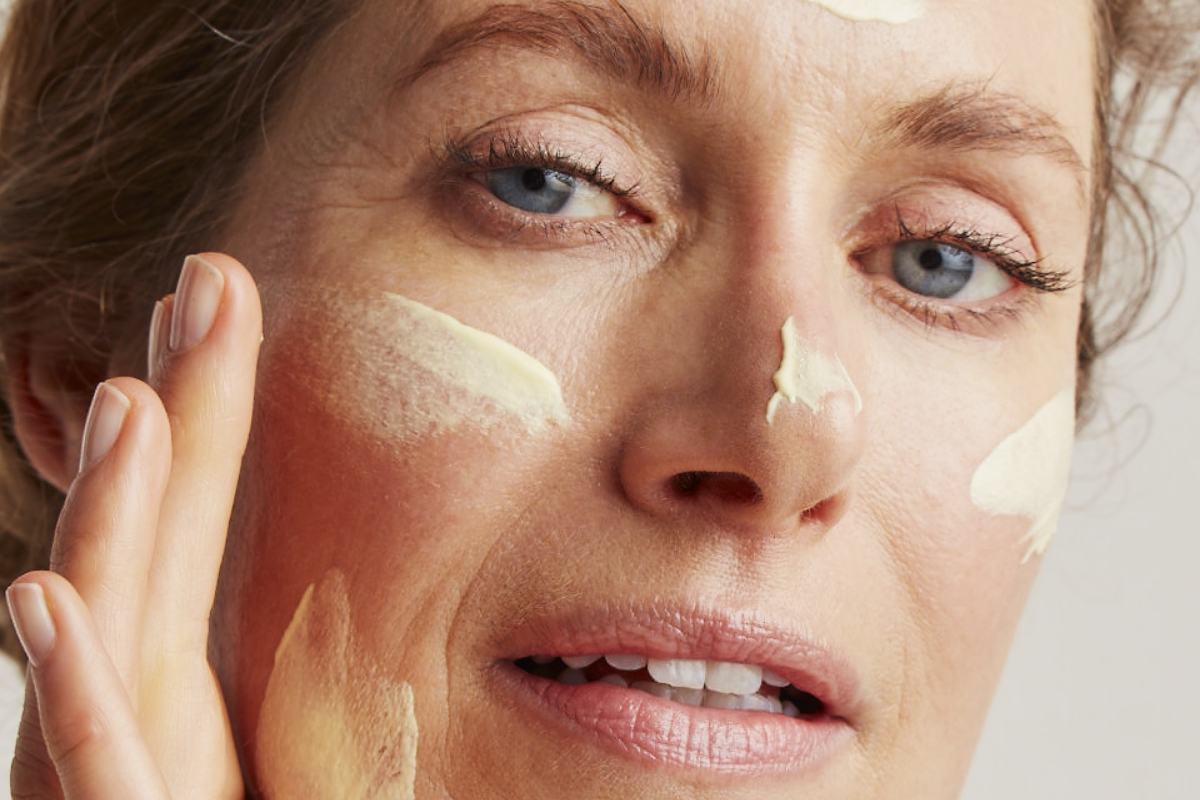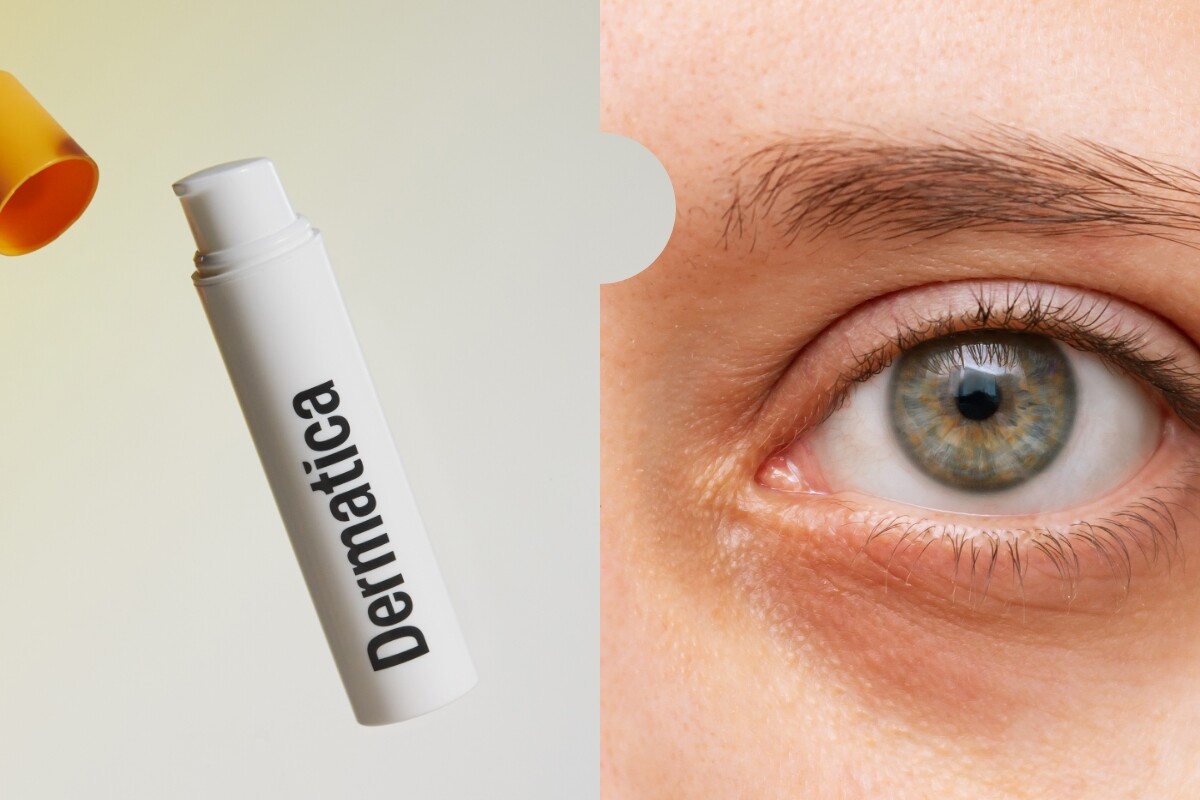Our skin is constantly changing. A pimple or two may appear, or you could look a little duller from one day to the next. Maybe you’re slightly flushed, or notice darker under-eye bags. All this is normal, and will probably go away in a day or two.
Pigmentation, also known as post-inflammatory hyperpigmentation, is common and harmless too, but dark spots or patches of grey-brown pigmentation might not fade away overnight. It’s often also stubborn to treat.
Melasma, also known as chloasma, is a form of pigmentation that’s also known as ‘the mask of pregnancy’ as it usually appears during or after having a baby (though this isn’t always the case). It’s characterised by symmetrical darkened patches on the cheeks, forehead and chin.
Want the full detail on what pigmentation and melasma are? And how to treat these conditions safely (especially if you’re pregnant or breastfeeding)? Then keep reading. We’ll tell you everything you need to know.
What causes pigmentation and melasma?
Your body produces melanin to protect you from the sun. But, when your body overproduces it, darker, uneven brown or grey patches may show up on your skin (just one of many reasons why it’s so important to wear sunscreen).
Pigmentation often happens in response to acute inflammation from skin damage, like a cut, rash or pimple.
Melasma is a form of pigmentation, and we’re beginning to understand that it happens when your melanocytes (the cells that make melanin) go into overdrive, leaving dark pigment deeper in the skin. (1)
These are some of the common triggers they’ve identified that cause pigmentation and/or melasma.
Sun Exposure
The most important trigger for both pigmentation and melasma in adults is spending excessive amounts of time in the sun, even if you don’t “burn.”(2) Remember, there’s no such thing as a safe tan. Sunlight triggers more melanin production, which is why both pigmentation and melasma is often seen on the face and neck more. Going out in the day without enough sunscreen can lead to uneven pigmentation, such as sunspots (also called age spots), freckles and melasma. Or if you already have pigmentation or melasma, it can make those patches darken or spread.(3)
Skin Inflammation
Inflammatory skin conditions like acne, eczema or psoriasis, once healed, can leave pigmentation marks behind known as post-inflammatory hyperpigmentation (PIH), which is a form of pigmentation. Similarly, the healing process for wounds, cuts, or burns can also lead to scars or darker patches. (4)
Hormonal Changes
Melasma, on the other hand, is called “the mask of pregnancy” because it’s often triggered or worsened by changes in female hormone levels. Fluctuations in oestrogen and progesterone from pregnancy, menopause, birth control pills, or hormone replacement therapy (HRT), play a big role in how our skin produces and distributes melanin. (1)
Medications
Certain medications like antibiotics, antimalarial drugs, and chemotherapy drugs can have side effects that may increase your skin’s sensitivity to the sun, causing hyperpigmentation or melasma patches to darken or return when your skin is exposed to UV rays.
Genetics
In some cases, your family history can play a role in how prone you are to either hyperpigmentation or melasma. So if your mum or sister experienced post-inflammatory pigmentation or melasma, for example, you’re more likely to be prone to it too.
Although melasma can occur in anyone, your race and skin tone can also be a factor. Melasma is more common in individuals with darker skin, including if you’re from Hispanic or Asian descent. (1)
Skin Ageing
As we age, our skin may not regulate melanin production in the same way it did when we were younger. We may notice age-related pigmentation changes, such as the development of age spots or melasma, and a more uneven skin tone.(5)
How do you treat pigmentation and melasma?
Pigmentation and melasma can be tricky to treat. But with the right skincare and, in some cases, prescription ingredients, there are science-backed ways to fade dark patches and maintain clear skin long term.
Tretinoin, a prescription retinoid and vitamin A-derivative, is one of the most evidence-based methods to treat acne, pigmentation and signs of ageing. It needs to be prescribed by an expert – and works by stimulating skin cell production, encouraging exfoliation to reveal new skin underneath. Your skin becomes more even and brighter as a result.
On the other hand, hydroquinone can be used specifically to treat forms of hyperpigmentation, like freckles, age spots and melasma. It’s also a prescription ingredient, which needs to be prescribed by a dermatology professional like the ones at Dermatica. It works by blocking the process in the skin that leads to discolouration – limiting your skin’s production of melanin. (6) It’s important to note that at Dermatica, we don’t advise using hydroquinone or tretinoin during pregnancy just to make sure you and your baby are safe. Once you’ve told us you’re expecting, we’ll prescribe an alternative treatment and change your formula at no extra cost.
What can you do to prevent pigmentation from coming back?
Successful treatment of pigmentation or melasma can be unpredictable, and you shouldn’t be disheartened if you have a flare-up. Sun protection, including wearing sunscreen daily and protective clothing, is crucial – but aside from that, you may need to consult with a dermatology professional to find the right treatment for you and your skin.
A dermatologist may suggest that you undergo lasers, facial treatments or facial peels, however these can be expensive and mildly painful.(8) Additionally, a dermatology expert can prescribe you retinoids or active ingredients like the ones mentioned above to fade and maintain your results.
Do you have pigmentation or melasma? If you’re looking for answers, why not start a free consultation with us today? We’ll help you diagnose your skin, and our dermatology experts will design a personalised treatment plan that’s specifically for you.
References
1.Basit H, Godse KV, Al Aboud AM. Melasma [Internet]. PubMed. Treasure Island (FL): StatPearls Publishing; 2023 [cited 2023 Jun 7]. Available from: https://www.ncbi.nlm.nih.gov/books/NBK459271/#:~:text=Etiologic%20factors%20include%20genetic%20influences
2. Handel AC, Miot LDB, Miot HA. Melasma: a clinical and epidemiological review. Anais Brasileiros de Dermatologia [Internet]. 2014 Sep [cited 2019 Aug 11];89(5):771–82. Available from: https://www.ncbi.nlm.nih.gov/pmc/articles/PMC4155956/
3. Del Bino S, Duval C, Bernerd F. Clinical and Biological Characterization of Skin Pigmentation Diversity and Its Consequences on UV Impact. International Journal of Molecular Sciences [Internet]. 2018 Sep 8 [cited 2019 Sep 26];19(9):2668. Available from: https://www.ncbi.nlm.nih.gov/pmc/articles/PMC6163216/
4. Lawrence E, Al Aboud KM. Postinflammatory Hyperpigmentation [Internet]. PubMed. Treasure Island (FL): StatPearls Publishing; 2021. Available from: https://www.ncbi.nlm.nih.gov/books/NBK559150/
5. Kim JC, Park TJ, Kang HY. Skin-Aging Pigmentation: Who Is the Real Enemy? Cells [Internet]. 2022 Jan 1 [cited 2022 Oct 20];11(16):2541. Available from: https://www.mdpi.com/2073-4409/11/16/2541
6. Journal of Aesthetic Nursing – Facial pigmentation and melasma reduction using a hydroquinone- and tretinoin-based skin transformation system [Internet]. Journal of Aesthetic Nursing. [cited 2023 Sep 26]. Available from: https://www.aestheticnursing.co.uk/content/clinical/facial-pigmentation-and-melasma-reduction-using-a-hydroquinone-and-tretinoin-based-skin-transformation-system/
7. Lowe NJ, Rizk D, Grimes P, Billips M, Pincus S. Azelaic acid 20% cream in the treatment of facial hyperpigmentation in darker-skinned patients. Clinical Therapeutics. 1998 Sep;20(5):945–59.
Ash Sharma
Dr Ashwin Sharma is a medical doctor and writer with a particular interest in health technology, artificial intelligence and medical weight loss. He completed his training at the University of Leicester and Imperial College London, and has since been exploring the intersections of medicine, technology, and communication.





